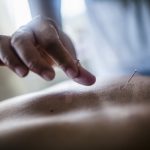Anemia from not getting enough iron is a common problem that people often don’t think about. It can hurt your overall health, your defense system, and your energy level. It happens when the body doesn’t have enough iron to make hemoglobin, a protein in red blood cells that carries oxygen around the body. Without enough iron, the body cannot create enough healthy red blood cells which results in exhaustion, weakness, dyspnea, and even cognitive issues. Though it affects individuals of all ages, women, children, and those with certain dietary restrictions or chronic medical problems are more likely to have this disorder. Fortunately, good diet, suitable supplements when needed, and lifestyle adjustments increasing iron absorption assist to prevent iron deficiency anemia. The following parts provide reasonable, realistic plans for preventing this condition and maintaining optimal health and vitality.
Eat a Diet Rich in Iron
One of the greatest ways to avoid iron deficiency anemia is to include foods heavy in iron into your daily diet. Food contains two kinds of iron: non-heme and heme iron. Heme iron, derived from animal products such red meat, chicken, and shellfish, the body absorbs more readily. Great choices for effectively increasing iron consumption include foods such beef liver, chicken thighs, tuna, and clams.
Plant-based sources of non-heme iron abound in lentils, spinach, chickpeas, tofu, and fortified cereals. Non-heme iron may still be rather important in avoiding deficiency—especially for vegetarians and vegans—even if it is not absorbed as well as heme iron when taken in reasonable doses. Key is to deliberately mix these items in your diet.
Including a range of iron sources guarantees equilibrium and facilitates the meeting of bodily needs. Aim for a mix of both types, especially if you follow a restricted diet. Planning meals with iron-rich ingredients at their core—like a spinach and lentil curry or grilled steak salad—can make a significant difference in iron levels over time.
Boost Iron Absorption with Vitamin C
Even if your diet includes iron-rich foods, your body may not absorb all of it unless aided by certain nutrients—especially vitamin C. This essential vitamin significantly enhances the absorption of non-heme iron from plant-based foods. Consuming vitamin C-rich foods such as oranges, strawberries, bell peppers, tomatoes, or broccoli along with iron-rich meals helps increase iron uptake in the digestive tract.
For instance, pairing a spinach salad with slices of orange or enjoying lentil soup alongside a fresh tomato salsa can dramatically improve iron absorption. This practice is particularly crucial for individuals who rely on plant-based diets, as non-heme iron is more difficult for the body to utilize without this nutritional support.
Incorporating fresh fruits and vegetables high in vitamin C doesn’t just support iron absorption—it also adds antioxidants and boosts your immune system. Making this a consistent part of your dietary routine can greatly reduce your risk of developing iron deficiency anemia over time.
Be Cautious of Iron Blockers
While some foods and beverages enhance iron absorption, others can hinder it. Substances like calcium, tannins, and phytates can interfere with the body’s ability to absorb iron effectively. Dairy products, high in calcium, can compete with iron for absorption when consumed together in large amounts. Similarly, beverages like tea and coffee contain tannins that can bind to iron and reduce its availability in the body.
It doesn’t mean you need to eliminate these foods or drinks entirely—timing is the key. Try to consume iron-rich meals separately from calcium-rich foods or caffeinated drinks. For example, avoid drinking coffee or tea immediately after eating an iron-rich lunch. Instead, have them a couple of hours before or after your meal to minimize any impact on iron absorption.
Also, some whole grains and legumes contain phytates, which can also inhibit iron uptake. Soaking, fermenting, or sprouting these foods before cooking can help reduce their phytate content and enhance nutritional value. Being mindful of these interactions ensures that the iron you consume is put to its best use.
Consider Iron Supplements When Needed
While food is the preferred source of iron, some individuals may require supplementation—especially those with increased needs or limited absorption. Women of childbearing age, pregnant women, frequent blood donors, and individuals with chronic health issues like gastrointestinal disorders may benefit from iron supplements under medical guidance.
Supplements come in various forms, including ferrous sulfate, ferrous gluconate, and iron-rich multivitamins. They should only be taken when prescribed or recommended by a healthcare provider, as excess iron can be harmful. Monitoring iron levels through routine blood tests is essential to avoid unnecessary supplementation or iron overload.
If supplements are necessary, taking them with vitamin C or on an empty stomach may enhance absorption, although they can sometimes cause gastrointestinal discomfort. In such cases, gradual dosing or slow-release formulas may be better tolerated. Remember, supplementation should complement a healthy diet—not replace it.
Monitor Your Risk Factors and Symptoms
Understanding your risk level for iron deficiency anemia is vital for prevention. Women with heavy menstrual periods, growing children, vegetarians, and people recovering from surgery or chronic illness may have higher iron demands. Knowing this allows for proactive monitoring and early intervention.
Symptoms of iron deficiency can be subtle at first but worsen over time. Common signs include fatigue, pale skin, dizziness, cold hands and feet, brittle nails, and poor concentration. If you experience any of these persistently, a simple blood test can confirm whether your iron levels are low.
Regular health check-ups and dietary evaluations help detect deficiencies early. If diagnosed, working with a healthcare provider or nutritionist to develop a tailored diet and lifestyle plan can correct the issue before it becomes severe. Prevention is far easier than treatment, and being aware of your body’s signals is the first step to long-term health.
Conclusion
Preventing iron deficiency anemia requires a proactive approach that combines smart nutrition, supportive habits, and an understanding of your body’s needs. By eating iron-rich foods, enhancing absorption with vitamin C, avoiding blockers at the wrong times, and supplementing only when necessary, you can maintain healthy iron levels and avoid the complications of anemia. With mindful habits and early awareness, it’s entirely possible to stay energized, strong, and well-nourished every day.

